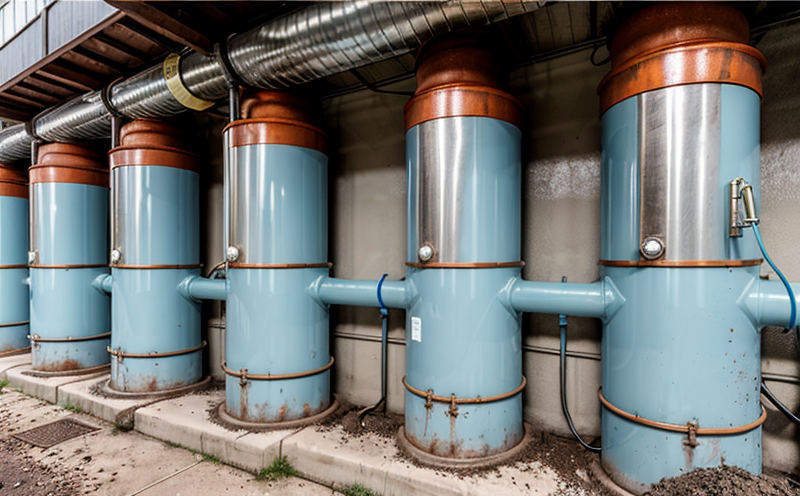ASTM G208 Erosion Corrosion Test in Water Systems
The ASTM G208 test method is a critical tool used to evaluate the resistance of materials and coatings to erosion-corrosion in water systems. This type of corrosion occurs when flowing or splashing liquids, gases, or slurries come into contact with a metal surface, leading to accelerated wear and degradation. In water systems, this can result from various factors such as sediment abrasion, oxygenated water, or the presence of dissolved solids.
The ASTM G208 test simulates these conditions by subjecting specimens to a flowing corrosive media under controlled conditions. The primary goal is to determine the relative resistance of materials and coatings to erosion-corrosion attack. This method is essential for quality managers, compliance officers, R&D engineers, and procurement teams in sectors like water treatment, power generation, and oil & gas.
The test setup involves a rotating specimen holder that exposes the material or coating to a jet of abrasive fluid at a specified velocity and angle. The flow rate is controlled to ensure consistent testing conditions. Specimens are typically held at 10° from the horizontal axis with a range of 5-15° depending on the desired test parameters.
The corrosive media used in ASTM G208 can vary based on specific application needs, but it often includes salt water or distilled water mixed with abrasive particles like silica or sand. The concentration and type of abrasive are critical to accurately simulate real-world conditions. After testing, the specimens are inspected for weight loss, surface damage, pitting, and other signs of erosion-corrosion.
This test is part of a broader suite of methods used in water systems to ensure material integrity and longevity. For instance, it helps in selecting materials that can withstand harsh environments like seawater or industrial wastewater. It also aids in optimizing coatings for enhanced protection against wear and corrosion.
The ASTM G208 test is widely recognized and frequently referenced in industry standards such as ISO 14697-3:2015, which provides additional guidelines for the testing of water systems. Compliance with these standards ensures that materials used in water systems meet international quality benchmarks.
| Parameter | Description |
|---|---|
| Flow Rate | Controlled to simulate real-world conditions, typically between 10-25 liters per minute. |
| Jet Velocity | Varies depending on the test setup but is usually around 30 m/s. |
| Specimen Angle | Held at 10° from the horizontal axis with a range of ±5° for consistency. |
Why It Matters
The ASTM G208 test is vital in water systems because it helps prevent premature failure and costly repairs. By identifying materials and coatings that withstand erosion-corrosion, engineers can design more efficient and reliable systems. This not only reduces maintenance costs but also enhances the overall performance of critical infrastructure.
For quality managers and compliance officers, the test ensures that suppliers meet stringent standards, thereby reducing risks associated with substandard materials. R&D teams benefit from this method by gaining insights into material behavior under specific conditions, which can lead to innovation in product design. Procurement professionals use ASTM G208 results to make informed decisions about sourcing the best materials for their projects.
The test also plays a crucial role in regulatory compliance and insurance requirements. By demonstrating adherence to recognized industry standards like ASTM G208, organizations can ensure they meet legal obligations while maintaining a competitive edge in the market.
Industry Applications
- Water treatment plants: Ensuring materials and coatings used in filtration systems are resistant to erosion-corrosion.
- Power generation facilities: Evaluating the durability of components exposed to high-temperature water flows.
- Oil & gas industries: Testing pipelines and pumps operating in corrosive environments.
- Desalination plants: Selecting materials for brine handling systems that can withstand severe abrasion.





